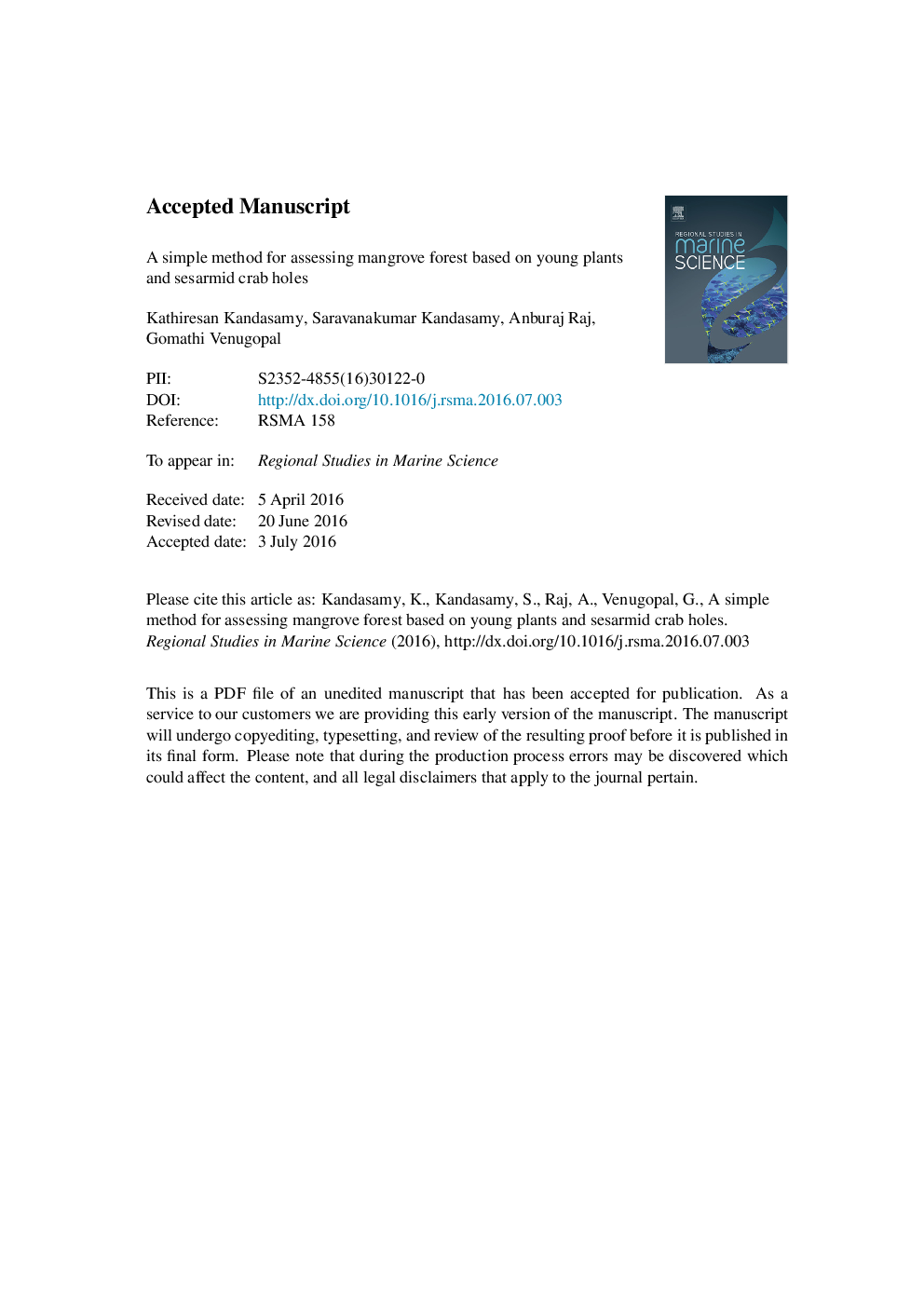| Article ID | Journal | Published Year | Pages | File Type |
|---|---|---|---|---|
| 6363272 | Regional Studies in Marine Science | 2016 | 21 Pages |
Abstract
Mangroves are unique in structure and functionally special, but ecologically sensitive to environmental changes. Hence, it is imperative to assess their structural and functional characteristics. Bearing this in mind, the present study analysed densities of trees, saplings, seedlings and sesarmid crab holes, as well as tree height, basal area, species diversity in function of the mangrove forest age groups (1-17.5 year old), and in relation to soil conditions for four different seasons. The regenerative potential in terms of density of young plants (seedlings+saplings) varied significantly between seasons or forest age. A similar trend was observed with density of crab holes. However, complex index (a sum of species diversity, tree density total basal area, total tree height) varied significantly between forest ages or seasons. The density of young plants ranged from 1,647 per hectare in summer to 3,058 in post-monsoon; and the density was as high as 2 fold in post-monsoon, 38% in pre-monsoon and 18% in monsoon than that in summer. The number of sesarmid crab holes varied from 1,347 per hectare in monsoon to 4,782 in pre-monsoon, and the number of holes was found higher in pre- and post-monsoons and lower in extreme seasons (monsoon and summer), similar to density of young plants. There was a significant positive correlation between the density of young plants and number of crab holes or tree density sapling density or complex index. This work identified a new method of assessing the eco-functions of mangrove forest in a simple way by counting density of young plants and sesarmid crab holes.
Keywords
Related Topics
Physical Sciences and Engineering
Earth and Planetary Sciences
Oceanography
Authors
Kandasamy Kathiresan, Kandasamy Saravanakumar, Raj Anburaj, Venugopal Gomathi,
